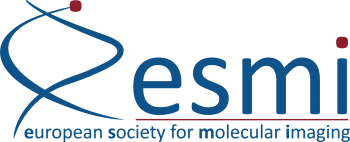Congratulations!
The PhD Award for excellent PhD thesis 2014 goes to Pouyan Mohajerani from Munich for his work on “Robust Methods and Algorithms for Fluorescence Imaging and Tomography”.
Robust Methods and Algorithms for Fluorescence Imaging and Tomography
Abstract
Using fluorescence to gain information about molecular processes in living organisms is a well-established technique, particularly in the microscopic regime. In the macroscopic regime (deeper than 1 mm under tissue), fluorescence imaging has offered promising solutions in both planar and tomographic modes to various preclinical and clinical problems, particularly powered by a myriad of target-specific probes. The potential significance and scope of applications of macroscopic fluorescence imaging are vast, ranging from preclinical drug development to clinical diagnostic and therapy monitoring. Nevertheless, fluorescence imaging in the macroscopic mode faces several technical challenges, particularly in the image reconstruction aspect, which hinder the full-realization of the potential of such technologies. Furthermore, many novels applications of fluorescence imaging have ushered in new processing challenges. Particularly, there is a need for reliable and robust image formation techniques for extracting bio-distribution information from surface optical measurements. Without such robustness and reliability, fluorescence imaging techniques will suffer from operator dependency and low specificity.
The subject matter of my dissertation was to develop solutions for several of such technical challenges and to subsequently apply these solutions to specific imaging problems in both preclinical and clinical domains. These solutions were developed by combining diverse concepts from the fields of mathematical optimization and estimation theories to physics and biology, in collaboration with several groups active in the areas of biophysics, biology and clinical diagnosis.
Specifically, a processing framework, dubbed XFMT, was constructed for 3-D reconstruction of the fluorophore distribution within small animals using hybrid fluorescence molecular tomography (FMT). Several aspects of the forward and inverse processing, such as light propagation, were theoretically examined and optimized for the tomographic reconstruction purposes. Several novel images algorithms are built in the XFMT framework. For instance, a compression method was developed and demonstrated for the first time for in vivo FMT data; leading to up to 100 times reduction in the inversion time. Additionally, an inversion method based on fuzzy logic was developed for reliable integration of the anatomical priors in the LSQR inversion. Incorporation of the anatomical priors in the optical inversion is the key challenge in hybrid FMT, as heuristic setting of the model parameters can lead to inversion bias. The constructed fuzzy algorithm, which also draws upon tools from the information theory, was offered an automatic approach to this end, which minimized the need for user intervention and improved reconstruction accuracy for in vivo data.
These theoretical advances, among others, opened the door to realization of several key preclinical applications. In the preclinical domain, we demonstrated cutting-edge technical capability for imaging several cancer murine models. The proposed FMT-phase contrast CT (FMT-PCCT) used for imaging pancreatic cancer models, delivered imaging accuracy unprecedented for optical tomography. In the clinical domain, we approached the active research challenge of imaging rheumatoid arthritis in human hand joints with optical tools in both planar and tomographic modes. In the planar mode, we improved the diagnostic accuracy using a commercial imaging device. In the tomographic mode, we demonstrated tomographic imaging of the ICG distribution in the PIP joints of 12 patients, for the first time using FMT.
Impact of my thesis by Pouyan Mohajerani
The impact of my research is two-fold. On one side, my work has paved the way for reliable molecular imaging using fluorescence. Although some of the imaging modalities used in my work, such as hybrid FMT, have existed for several years now, they have not yet found their place in everyday preclinical and clinical application domain, due this is lack of reliability and their high operator-dependence. The robust imaging algorithms and frameworks offered by my work are expected to change this situation, as they have already lead to a breakthrough in the range of imaging possibilities, as demonstrated in our own institute and in collaboration with several partners. Another testament to this fact is the commercialization of my work to leading pharmaceutical companies by Helmholtz Zentrum München.
On another front, my PhD research has demonstrated new imaging applications and technologies only made possible by the theoretical advances developed during my research. As an example, the hybrid FMT technology and accompanying processing suite were applied to image several mouse models of cancer. The developed FMT-PCCT technology can be considered as the state of the art in tomographic molecular imaging using optical methods and was used to image PDAC (pancreatic ductal adenocarcinoma) with an unprecedented accuracy. More importantly, the technologies developed were used to image inflammatory processes associated with rheumatoid arthritis in human hand and finger joints using ICG. These solutions are expected to be widely deployed in the clinic as a cost-effective and rapid alternative to dynamic MRI for diagnostic and therapeutic monitoring of RA; as is currently being pursued by our partners at the Rheumatology and Radiology departments of Munich’s Klinikum rechts der Isar.
In short, the research performed is expected to revamp the utility of fluorescence imaging and tomography in both preclinical and clinical domains by offering solutions which the end users, i.e. biology researcher and clinicians, can rely on. The methods developed also offer a solid foundation for helping future theoretical research in this direction.
Pouyan Moharerani on his future career plans
“Pursuing an academic career in Europe in the field of medical imaging.”

Winner 2014
“In his Ph.D. work, several important achievements have been showcased for the first time. For example, Dr. Mohajerani used fluorescence to successfully demonstrate early tomographie imaging of arthritis in human finger joints (as published in 2014 in the journal Radiology). The presented FMT-PCCT technology constitutes the state-of-the-art in molecular optical imaging. Recent work of Dr. Mohajerani on frequency-domain techniques is expected to lead to a paradigm shift in the field of optoacoustic technology.
Vasilis Ntziachristos – supervisor
As a highly intelligent, motivated and professional scientist in command of exceptional theoretical and experimental skills, Dr. Mohajerani has become a leader in the field of fluorescence tomography. His work has produced some of the most important achievements in this area in the last few years, represented by 10 journal papers (in 7 of which he is first author). Additionally Dr. Mohajerani’s patented work has already been commercialized and is now in use in the industry.”
